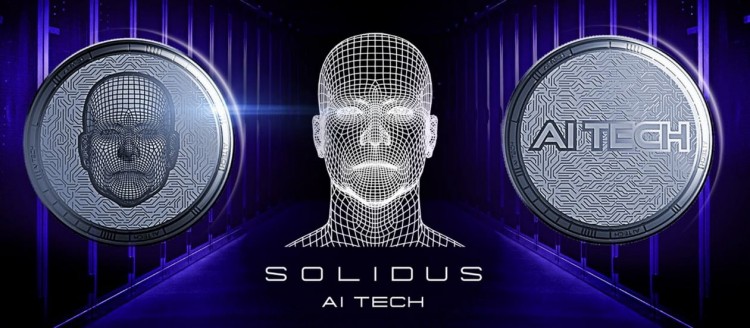摘要:“RestrictingdeveloperstosolelyP2Ppaymentsstiflescreativeexplorationandpotentiallyexcludesvaluableusecases,”saidthepseudonymousfounderofBitcoinVirtualMachine(BVM)knownas“punk3700...
Bitcoin (BTC) can only “stand a chance” at mass adoption if it opens up to the $57 billion world of decentralized finance (DeFi), according to developers of Bitcoin layer-2 networks.
While Bitcoin holds the role of a currency, a “digital gold,” and, more recently, a platform to host digital artifacts (Bitcoin Ordinals), developers tell Cointelegraph that there are many more impactful use cases for the blockchain yet to be realized.
“Restricting developers to solely P2P payments stifles creative exploration and potentially excludes valuable use cases,” said the pseudonymous founder of Bitcoin Virtual Machine (BVM) known as “punk3700.”
Punk3700 founded Bitcoin Virtual Machine, which emerged in January 2023 — adopting a modular Bitcoin layer-2 “meta-protocol” architecture, allowing anyone to create their own customized layer-2 blockchain on Bitcoin. The solution connects the Ethereum Virtual Machine (EVM) with Bitcoin.
How to build a Bitcoin L2 for gaming that processes 1M+ transactions in one day?
— Bitcoin Virtual Machine (@BVMnetwork) January 30, 2024
That’s what Bitcoin Arcade (@GamingOnBitcoin) team did!
Powered by BVM, they customized and launched their own Bitcoin L2 gaming blockchain with a modular architecture:
@Bitcoin for security… pic.twitter.com/FQM0LrWFlq
The BVM founder stressed a real need to create a consumer layer on top of Bitcoin for the network to fulfill its full potential, adding that DeFi applications are key, even if it could bring “bad actors” to the ecosystem.
“The decentralized world should empower developers to build freely with the autonomy to scale their creations.”
“There will be trial and error, but only then may we stand a chance for mass adoption on Bitcoin.”
Last year, the founder of cross-chain infrastructure firm Botanix Labs, Willem Schroé — who created the Spiderchain — also argued that Bitcoin’s potential won’t be fulfilled unless it can connect to the broader financial system.
Earlier in 2023, Botanix Labs began working on the Spiderchain — a proof-of-stake layer 2 that implements EVM to EVM bridges to enable Bitcoin to interact with the EVM. Its public testnet officially launched on Nov. 29.
Connecting Bitcoin to Ethereum-based real-world assets, stablecoins, DeFi and nonfungible tokens (NFTs) via the EVM is the first step in that direction, Schroé argued.
“That’s a huge amount of value and development waiting to happen.”
SatoshiVM marred by controversy
Meanwhile, another layer-2 community-driven project has been working on an EVM-compatible layer-2 solution to Bitcoin, powered by zero-knowledge rollups — though it has been marred by controversy over a recent token launch.
Launched in 2023, SatoshiVM has already tallied over 400,000 unique wallets and processed more than 4.2 million transactions and can connect both Bitcoin and EVM ecosystems.
Its highly anticipated SAVM token launched on Jan. 19. One of SatoshiVM’s advisers, “MacnBTC” was accused of harvesting “millions in profits” from the token launch by Ape Terminal, which they denied.
The controversy caused the SAVM token to plunge as much as 38%.
Bitcoin Layer 2 Networks Overview
— ICO Drops (@ICODrops) January 31, 2024
https://t.co/TN9IWeckdi pic.twitter.com/fZGClnMnyM
However, not all projects want to see the same expansion for Bitcoin.
Another Bitcoin-based virtual machine emerged on Oct. 9 — a project launched by ZeroSync project lead Robin Linus.
However, its purpose has been to scale Bitcoin’s transaction speed rather than to implement smart contracts and have Bitcoin flooded with EVM-like tokens.
“I don’t want to see everything from the Ethereum ecosystem because most of it is Ponzi schemes,” explained one of BitVM’s developers, “Super Testnet” in an October interview with Cointelegraph.
Super Testnet was against building a decentralized exchange on Bitcoin, arguing it would be a “step backward” for the network.
Related: BIP-300 biff: Debate reignites over years-old Bitcoin Drivechain proposal
Punk3700, however, argues that as native Bitcoin lacks a general-purpose programming language and virtual machines, it makes sense to build one on top of it because “Bitcoin is the perfect consumer brand.”
The rise of Ordinals inscriptions as a non-payment application on Bitcoin exemplifies this, they said. “We experienced first-hand how much people were excited for more use cases on Bitcoin!”
The pseudonymous figure said GameFi, SocialFi, art and artificial intelligence applications have already been built on BVM.
Alex Miller, the CEO of Hiro which offers a suite of tools to build on Bitcoin layer-2 project Stacks previously told Cointelegraph that we shouldn’t be surprised that developers are making Bitcoin programmable — because that’s what Satoshi Nakamoto envisioned:
“Satoshi himself wrote back in like 2010, 2011, that he foresaw additional layers [and] additional chains will get built on top of this, to provide all of that kind of programmability.”
Magazine: Ordinals turned Bitcoin into a worse version of Ethereum — Can we fix it?




